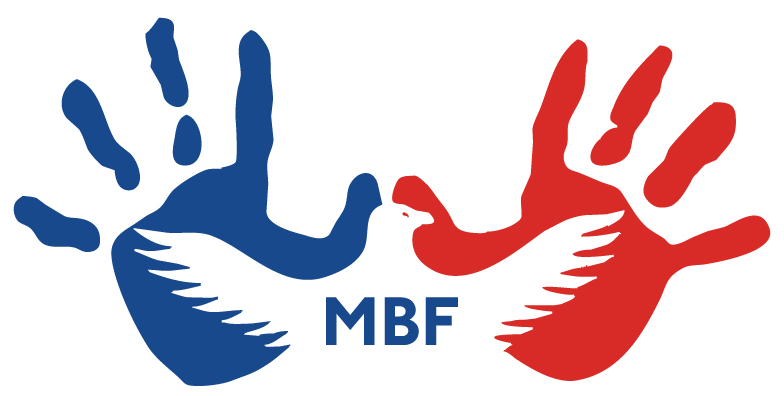
Your Child's Safety Matters This Summer!
MBF believes safety is a team effort, so we’ve put together these summer safety tips and talking points to help you better protect your children.
Summer Safety Tips
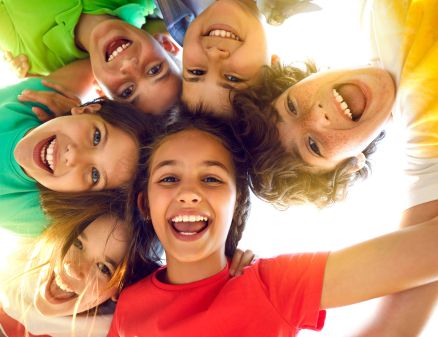
5 Safety Rules
The 5 Safety Rules that are taught to children during the MBF Child Safety Matters® program are designed to help children and teens identify and respond appropriately to any unsafe situation. Take a closer look at the Safety Rules, and learn how you can use them to keep children and teens safe this summer!
Click Here to Read More >
5 Safety Rules
The 5 Safety Rules that are taught to children during the MBF Child Safety Matters® program are designed to help children and teens identify and respond appropriately to any unsafe situation. Take a closer look at the Safety Rules, and learn how you can use them to keep children and teens safe this summer!

Safety Rule #1 - Know What's Up

For Safe Adults, Safety Rule #1 - Know What's Up means:
- Knowing the types of victimization children are likely to be exposed to.
- Knowing where your child is and who they are with at all times.
- Knowing the names of the children they frequently play with and their parents' names and phone numbers.
- Asking questions about the time they spend away from you.
- Knowing what digital devices they are using and/or have access to.
For children, Safety Rule #1 - Know What's Up means:
- Knowing important personal information such as their home address, parents’ full names and phone numbers.
- Understanding what to do in an emergency (Who should they call? Where should they go?).
- Having a family password that can be used if someone ever needs to pick them up due to an emergency.

Safety Rule #2 - Spot Red Flags

For Safe Adults, Safety Rule #2 - Spot Red Flags means:
- Understanding the warning signs that your child is being groomed, being abused or bullied, or is unsafe.
- Teaching your child about Red Flags that may let them know they are unsafe, such as someone violating their personal space or boundaries, using tricks to get them to do something unsafe, or someone asking them to keep a secret.
- Teaching them the correct names for their private body parts and how to report if anyone looks at, touches, or takes pictures of their private body parts.
For children, Safety Rule #2 - Spot Red Flags means:
- Knowing who can hurt them and how.
- Knowing their personal space and boundaries (including the correct names for their private body parts).
- Knowing the warning signs of unsafe situations, such as someone trying to trick them, asking them to keep secrets from you, or looking at or touching their private body parts.
- Knowing how to stay safe online.
By talking to your child, and educating them about the dangers present in society, and how to Spot the Red Flags that lead to those dangers, it minimizes their risk of being victimized.
If you Spot Red Flags, it is important to remember the presence of Red Flags does not prove abuse, neglect, or bullying is happening, however, they MIGHT indicate some type of victimization is occurring, and it is wise to seek more information. It is also important to remember that warning signs of abuse, neglect and bullying vary from child to child.

Safety Rule #3 - Make a Move

For Safe Adults, Safety Rule #3 - Make a Move means:
- If/when you suspect your child is being harmed, you trust your instincts and Make a Move to keep them safe.
- If your child tells you about abuse or bullying that has happened to them or another child, praise them for telling you and take action right away.
- Call a professional who can determine what happened and act in the best interests of the child.
- Report unsafe online situations to law enforcement or the CyberTipline at 1-800-843-5678.
- Report any bullying immediately to the organization where the bullying is happening.
- In Florida, report suspected child abuse immediately to the Florida Abuse Hotline at 1-800-96-ABUSE (in other states, visit www.childwelfare.gov/organizations to find contact information.).
For children, Safety Rule #3 - Make a Move means:
- If they are being hurt, or believe a friend is being hurt, they will Make a Move to help them stay safe.
- If possible, they will Get Away from any unsafe situation.
- If they know people or places that are unsafe, they will Stay Away.
- They will Get Away and Stay Away from unsafe situations online.
Visit our website or download our free "Child Safety Matters" app from the App Store or Google Play for more information and resources on Making a Move.

Safety Rule #4 - Talk It Up

For Safe Adults, Safety Rule #4 - Talk It Up means:
- Talking to other adults about child safety, because Child Safety Matters!
- Talking to your child using everyday opportunities to discuss safety, unsafe situations, and the 5 Safety Rules.
- Asking your child to spot Red Flags and apply the Safety Rules to protect themselves using role-play opportunities.
- Letting your child know that telling you or another Safe Adult about an unsafe situation is very important and is not tattling or snitching.
- Letting your child know they can talk to you about anything, so that if the need ever arises, they will feel comfortable talking to you about difficult topics.
For children, Safety Rule #4 - Talk It Up means:
- Using their voice to say "No" when they Spot Red Flags, see an unsafe situation, see a friend who is unsafe, or when someone makes them feel unsafe, online or off.
- Talking to a Safe Adult if they feel unsafe, or aren't sure if a situation is unsafe.
- Continuing to use their voice to Talk It Up until they have received help, and they are safe.
Remember, if your child comes to you about an unsafe situation, take the time to listen, reassure the child that you will help as best you can, and follow through by seeking help and reporting suspicions to the proper authorities.

Safety Rule #5 - No Blame | No Shame

For Safe Adults, Safety Rule #5 - No Blame | No Shame means:
- Letting your child know that no matter what happens to them, they are never to blame, because adults are responsible for keeping kids safe ALWAYS.
- Letting them know that no matter what they are told, they should never be ashamed to tell you or another Safe Adult about Red Flags, abuse, bullying, or anything else they need to tell you to help keep them safe.
- Letting your child know you support them.
- Understanding you are not to blame and should not be ashamed to seek help if your child is ever abused or hurt.
For children, Safety Rule #5 - No Blame | No Shame means:
- Knowing they are not to blame if they are ever hurt by an adult or another child.
- Knowing they should not be ashamed to tell.
- Knowing it is never too late to tell, no matter what has happened, when it happened, or what they have been told.
1 in 4 children in the U.S. will experience some form of maltreatment in their lifetime. In 2015, that equated to almost 700,000 children... and those are just the ones we know about. By some estimates, only 1 in 10 children will ever report their abuse. It is important that all victims understand that abuse is never their fault, and they should never be ashamed to tell.
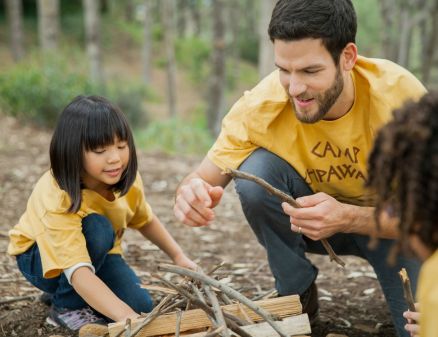
Safe Adults
At MBF, we believe adults are responsible for keeping children safe, however, we also know that some adults aren't always safe. If a child or teen is in an unsafe situation, or if they're not sure about a situation, they need to know that they can always use Safety Rule #4 to Talk It Up with a Safe Adult.
Click Here to Read More >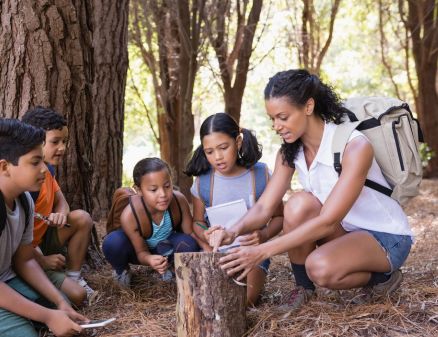
Safe Adults
At MBF, we believe adults are responsible for keeping children safe, however, we also know that some adults aren't always safe. If a child or teen is in an unsafe situation, or if they're not sure about a situation, they need to know that they can always use Safety Rule #4 to Talk It Up with a Safe Adult.
What is a Safe Adult?
A Safe Adult is someone in a child or teen's life that they trust, and whom they know will always keep them safe. If a child or teen finds himself or herself in an unsafe situation, it is important that they have a Safe Adult to talk to that will help keep them safe.
What should a child or teen look for when identifying a Safe Adult?
- A person who is older than them, and who can help in an unsafe situation
- A person who they feel comfortable talking to about scary or tough situations
- Someone who will listen to them
- Someone who follows the Safety Rules, and someone who doesn't try to get them to break the Safety Rules
Who are some examples of Safe Adults?
Safe Adults can be parents, family members, neighbors, teachers, counselors, coaches, or anyone else who meets the criteria of a Safe Adult. Encourage your child to identify at least two Safe Adults, one living in the home and one living outside of the home. Once your child has identified their Safe Adults, ask them:
- Who they chose as a Safe Adult, and why
- What they would feel comfortable talking about with them
- How they would like their Safe Adult to respond if they told them they were in an unsafe situation
Make sure your child lets their Safe Adults know they've chosen them, and make sure they know how to help as a Safe Adult by encouraging them to visit https://mbfpreventioneducation.org/learn-more/safe-adult-club/.
It's also important for your child to know if their Safe Adult isn't available to help them, they need to talk to another Safe Adult, and they need to keep talking until someone does something to help them.
What if your child is lost, or there is no Safe Adult available?
Make sure your child understands if a Safe Adult isn't available and they need help (whether they're lost, being threatened, or being followed), they may need to seek help from a stranger. Teach them the following guidelines:
- Strangers who are unsafe don't always look scary, and sometimes people that seem nice can hurt children.
- If they ever get lost or separated from you, they may have to ask a stranger for help.
- Safe strangers may be hard to find, but they should look for someone who is wearing a uniform, such as a police officer or someone who works wherever they are.
- They should also look for a group of adults to ask for help. It's even better to ask adults who have children with them for help.
- If someone offers to help them, they can tell them their first name and your name, but they should stay where they are and never leave or go off with anyone, because sometimes, strangers do hurt children.
Why can it be helpful to have a Safety Buddy or Friend?
Sometimes it is easier for a child to talk to an adult if they have someone with them, so teach your child they can also talk to a Safety Buddy or Safety Friend if that would be helpful. A Safety Buddy, or Safety Friend, is a friend, sibling, cousin, etc. that your child trusts, and might find it easy to talk to about unsafe situations.
However, be sure your child knows that while talking to a Safety Buddy or Friend can be helpful, their role is to help your child talk to a Safe Adult. They should always talk to a Safe Adult any time they are unsafe or unsure if a situation is safe.
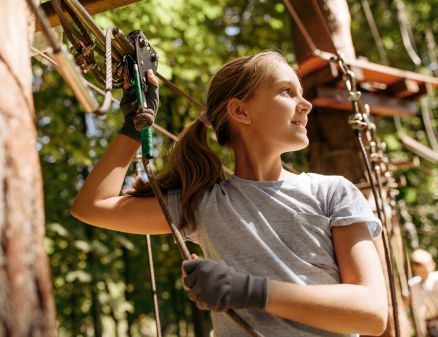
New Places
Summer is a time when many children and teens attend camps and other programs to keep them busy and active. While most are generally safe places for children, parents need to be aware that predators look for places where children congregate to find potential victims. To ensure your child's safety, it's important to learn what to look for in organizations, programs, and camps where you plan to leave your children. It's also important to know what questions to ask organizations about their child protection policies to ensure the organization is aware of, and actively works to minimize common risks to children.
Click Here to Read More >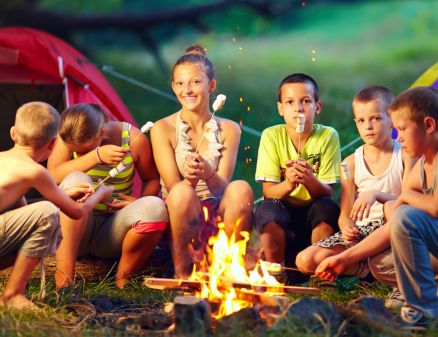
New Places
Summer is a time when many children and teens attend camps and other programs to keep them busy and active. While most are generally safe places for children, parents need to be aware that predators look for places where children congregate to find potential victims. To ensure your child's safety, it's important to learn what to look for in organizations, programs, and camps where you plan to leave your children. It's also important to know what questions to ask organizations about their child protection policies to ensure the organization is aware of and actively works to minimize common risks to children.
Questions Parents Should Ask:
- Is the camp accredited by the American Camp Association? ACA Accreditation assures parents that the camp has had a regular, independent safety audit that goes beyond regulations in most states. While no accreditation process, licensing program, or set of regulations or laws can guarantee safety, accreditation is the best evidence for parents that a camp is committed to providing a safe and nurturing environment for their children.
- What types of child safety training do counselors or staff receive? At a minimum, camp staff should be trained in safety regulations, emergency procedures and communication, behavior management techniques, child abuse prevention, appropriate staff and camper behavior, and specific procedures for supervision.
- What is the counselor-to-camper or staff-to-child ratio? In general, smaller group sizes help ensure that there are enough staff members to maintain safety. Lower counselor-to-camper or staff-to-child ratios can also serve as an indicator of a higher-quality program, because a child care provider or camp counselor can be more sensitive and responsive to children's needs if he/she is responsible for a smaller group of children. This helps create an environment where children can feel emotionally secure, because staff members or counselors get to know the children well, can individualize interactions, and are able to be more responsive and can nurture relationships between the children. Check out the ACA website for an overview on recommended counselor-to-camper ratios.
- Is there a policy prohibiting one staff member being alone with a child? Most sexual abuse occurs in one adult-one child situations, so if an organization prohibits one adult – one child situations, it minimizes the risk of abuse happening.
- How are behavioral and disciplinary problems handled? Rules are necessary in any organization and the disciplinary approach taken should be reasonable and well communicated. If penalties are involved for violations, they should be applied quickly, fairly, calmly, and without undue criticism to children. Parents should verify that an organization doesn't use corporal punishment as research has shown that it is not effective as a disciplinary measure.
Even if your child is not attending a summer camp program, there are still many new places that they may encounter. Whether they are having a sleepover at a friend's house, attending a music lesson at a new studio, or going on a family vacation, it is important to keep them safe at all times.
Things to Talk to Your Child About Before They Go:
- Remind them that if they feel uncomfortable or unsafe at any time to let you know so that you can come pick them up. It may be helpful to set up a code word they can text to you or call you with.
- Ensure that they know your contact info, their address, and other relevant personal information in case of emergency.
- Make sure they know you expect them to check in at regular intervals. It may be helpful to set up a regular schedule for them to check in.
- Remind them (and the parent, guardian or Safe Adult they will be with) that they are not to be left alone, or left with anyone you don't know, at any time.
- Establish a place to meet up, so that if they get lost, they know where to go, and you (or another Safe Adult) can find them easily.
Additional Considerations:
- When possible, drop in unannounced at different times to ensure your child is being cared for and is happy and safe.
- Ask your child questions at the end of each day. Listen for anything that might indicate they are fearful, unhappy, or hesitant to return.
Familiar Places:
Even if you and your child are in a familiar place, you still need to be alert and on the look out for possible dangers, as predators often frequent places where children (and families) congregate. By taking a proactive approach, you can help limit the dangers your child may be exposed to.
- Know where your child is at all times, and stay close enough that you can intervene if there's trouble.
- Make it a rule that your child must ask permission or check in with you before going anywhere, even if it's to another area of the playground or park.
- Children (even older kids) should not go to the bathroom alone in a park, amusement park, or other venue. They should at least have a buddy with them, if not another Safe Adult or parent.
- Show your child safe places to play, safe roads and paths to take, and safe places to go if there's trouble.
- Encourage your child to avoid playing or going places by themselves. There's safety in numbers!
- Work together with other Safe Adults to watch out for suspicious or unusual behavior in your neighborhood, park or playground.
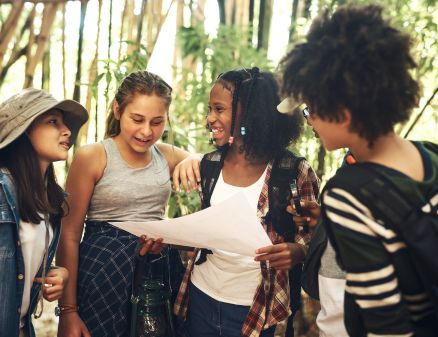
Unfamiliar Faces
Visiting relatives, attending pool parties, and having sleepovers with friends are favorite summer pastimes, and are great places for your child to make new friends. These activities are great fun, but it's important to be cautious of the many unfamiliar faces that your child will be seeing. With some precautions and important conversations with your child, they will be able to spend time with others, make new friends, and stay safe.
Click Here to Read More >
Unfamiliar Faces
Visiting relatives, attending pool parties, and having sleepovers with friends are favorite summer pastimes, and are great places for your child to make new friends. These activities are great fun, but it's important to be cautious of the many unfamiliar faces that your child will be seeing. With some precautions and important conversations with your child, they will be able to spend time with others, make new friends and stay safe.
Important Conversations to Have:
- Talk to your child about real-world dangers. Explain that it's not safe for them to be alone with one adult, or to visit inappropriate websites with their friends.
- Remind them that the rules you establish apply at all times, whether they are at home or not.
- Establish a private code word for them to text you if they feel unsafe and need to be picked up.
- Talk to any person who will be supervising your child, and let them know the rules you have set and your expectations of safety.
- Ask your child specific questions when they get home like who was there, what did they do, and if they were in any unsafe situations.
Safe vs Unsafe Strangers:
Many times, children are taught to avoid strangers by well-meaning adults who think that will keep them safe. Yet, it is hard to avoid strangers. Adults speak to strangers every day, for example when they're at a store, or just saying hello in passing to be polite. It often becomes common for children to think that "bad-looking" strangers are dangerous and "nice-looking" strangers are okay. However, children must be taught that no one can tell if strangers are nice or not nice just by looking at them, and that they should be cautious around all strangers.
If a child needs help (for example, if they are lost) here are some guidelines for them to follow:
- If they ever get lost or separated from you, they may have to ask a stranger for help.
- Safe strangers may be hard to find, but they should look for someone who is wearing a uniform, such as a police officer or someone who works wherever they are.
- They should also look for a group of adults to ask for help. It's even better to ask adults who have children with them for help.
- If someone offers to help them, they can tell them their first name and your name, but they should stay where they are and never leave or go off with anyone, because sometimes, strangers do hurt children.
- Establish a private family password that only you and your child know so that if someone ever needs to pick them up, you can share the password and your child will know you sent them.
While people often assume abuse happens by strangers, or people unfamiliar to the child, research shows that most sexual abuse and victimization happens by someone a child knows and trusts like a relative, a babysitter, a friend's older sibling, or even a parent. Therefore, it's important to ensure your child is safe with all adults, not just unfamiliar ones.
It's also important to know that children can be abused by other children. In fact, approximately 30% of sexual abuse occurs by an older or more powerful child. So while it's important to be cautious when leaving your child with an adult, it is also important to be cautious when leaving them with other children that might have unsupervised time with your child.
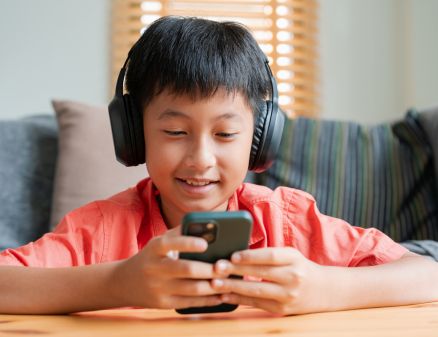
Screen Time
Without school, homework, or after-school activities this summer, children will inevitably spend more time on their digital devices. To help keep your child safe, you should be aware of the various digital dangers that children and teens face, such as the dangers posed by online games, apps, chatrooms, and virtual reality sites. Learn more about topics to discuss with your child to help minimize their exposure to digital dangers.
Click Here to Read More >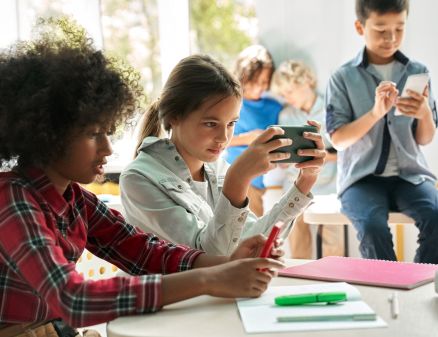
Screen Time
Without school, homework, or after-school activities this summer, children will inevitably spend more time on their digital devices. Below are some topics to discuss with your child to help minimize their exposure to digital dangers. To help keep your child safe, you should be aware of the various digital dangers that children and teens face, such as the dangers posed by online games, apps, chatrooms, and virtual reality sites.
Teaching Children Digital Safety & Digital Citizenship:
- Establish expectations for the number of hours of screen time they are allowed each day.
- Discuss websites and apps that they may/may not visit or use.
- Chat rooms, online games, apps and virtual reality sites are common places that cyberbullies and predators hang out.
- Keep digital devices in common areas of the house. This will allow for better monitoring.
- Make sure they know to use Safety Rule #3 to Make a Move and Get Away from unsafe or inappropriate content.
- Make sure they also know how to use Safety Rule #4 to Talk It Up to you or another Safe Adult if they encounter inappropriate content or other unsafe situations online.
- Remind them that everything they post on social media is Public and Permanent.
- Explain to your child that it is important to establish a good online reputation now, because it will follow them for the rest of their life.
After talking with your child about digital safety and citizenship, you may want to develop a digital safety agreement with your child to help keep them safe. Print it out and hang it near the computer to show that everyone in the house agrees to be safe online!
Cyberbullying:
One out of five kids is, or will be, cyberbullied at some point during their school years. Although students are enjoying their summer break from school, cyberbullying never takes a vacation. Cyberbullying is repeated, threatening or harassing behavior that occurs online via the Internet, cellphone, or other digital technology.
If your child is a victim of cyberbullying, here are some tips on how to respond:
- Resist the urge to take your child’s device away as that only punishes them.
- Encourage your child to ignore the cyberbully, as engaging with the bully may make the situation worse.
- Save, copy, and/or print out any evidence of cyberbullying.
- Block the cyberbully and report them to the social media site or website where the cyberbullying is happening.
- If the cyberbullying doesn’t stop, report it to your local law enforcement agency.
- Be supportive when helping your child deal with their situation, never blaming them.
Cyberbullying Resources:
- http://resources.uknowkids.com/blog/bid/173713/10-Signs-Your-Child-is-a-Cyberbullying-Victim
- http://www.stopbullying.gov/cyberbullying
- http://kidshealth.org/en/parents/cyberbullying.html
How to Monitor Your Child's Time Online
There are a variety of tools, apps, and software products that will help you monitor your child’s online activity. These products allow you to see what your child is searching, viewing, and posting online, and some may help protect your child from cyberbullying, viewing inappropriate content, and/or interacting with strangers online.
Remember: Internet safety and monitoring is not about prying or spying, it’s about being an involved parent.
What They're Saying...
The MBF Teen Safety Matters curriculum hosts an in-depth approach to important social and safety concerns relevant to youth. The program content is age-appropriate with engaging activities, jargon, and realistic situations to positively promote a relatable and impacting learning experience…Teen Safety Matters is an educational benefit to all parties involved – students, parents, facilitators, and schools.
The MBF Child Safety Matters program is impressive. This important information is well formulated and well presented, developmentally appropriate, and based on good understanding of literature.
I heard about the program through my son. He came home…and showed me the safety rules. I cannot thank the Foundation enough; to have other people who are also concerned about my child’s safety and the safety of other kids is wonderful. I especially like the program’s focus on the prevention side.

